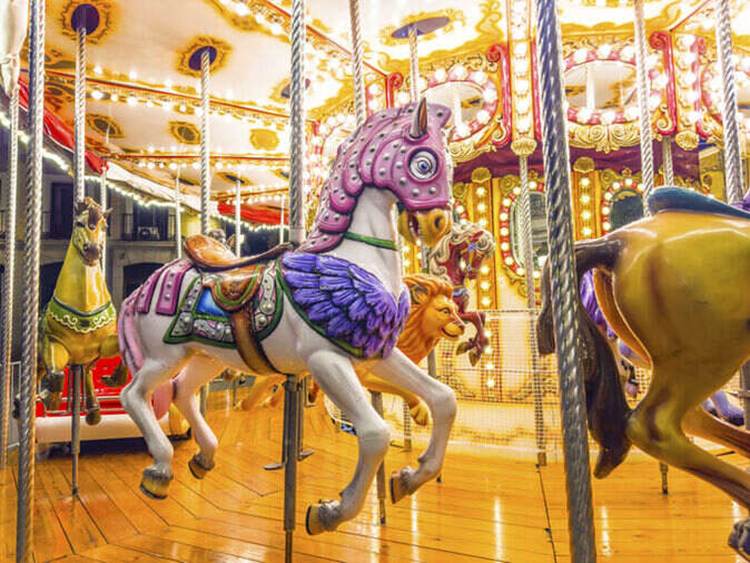
Accidents Caused by Defective Ride Equipment
When Fun Turns Dangerous Because of Faulty Gear
You showed up for easy thrills, bright lights, and a little escape. Not a grinding noise. Not a sudden jolt. When a ride fails because the equipment’s defective, the fallout hits fast and hard. It shouldn’t happen. Ever.
At Horn Wright, LLP, our personal injury attorneys handle amusement-ride injury claims across New York and also serve clients in New Jersey, New Hampshire, Vermont, and Maine.
Each state plays by different rules, so your strategy has to match the venue. If a part failed and you got hurt, call (855) 465-4622. We’ll dig into what failed, why it failed, and who has to make it right. We’ll move quickly before records “update” away.

How Equipment Defects Put You at Risk
Defects don’t pop out of nowhere. They start as small problems, then grow when testing is skipped or parts are pushed past their limits. Parks and manufacturers are supposed to catch those issues long before you ever buckle in.
Here’s where danger hides most often:
- Faulty restraints and harnesses: Restraints are your last line of defense. When materials are substandard or testing gets skipped, latches loosen and belts crack under load. A routine cycle turns scary fast. Real programs replace parts on schedule and document the proof, every time.
- Brake and gear failures: Coasters and drop rides depend on friction systems to stop cleanly. When pads glaze, fluids degrade, or gears grind, control slips. Operators feel it as drift or slam. Stretching components beyond their lifespan is a risk.
- Electrical malfunctions: Bad wiring, tired sensors, or sloppy panels trigger stalls, misreads, and unsafe movement. These problems start in installation and snowball without audits. Healthy systems are tested under real conditions, not just glanced at on a clipboard.
- Structural weaknesses: Fatigue, corrosion, and poor welds start microscopic and end catastrophic. You can’t “wish” metal back into shape. Inspections should find the hairline crack and sideline the ride before anyone gets in line.
A strong maintenance file tells the truth—part numbers, torque values, replacements, and closed work orders. If the story is thin, accountability gets easier.
The Lasting Impact of Defective-Equipment Accidents
These injuries don’t clock out when the park closes. They follow you into work, family time, and daily routines. That’s why same-day care and steady follow-ups matter for your health and for your claim.
You might be dealing with:
- Head and brain trauma: Sudden stops and impacts cause concussions, skull fractures, and changes in memory and focus. Symptoms can creep in hours later. Early imaging and consistent treatment protect your recovery and the medical link to the ride.
- Broken bones and internal injuries: Arms, ribs, ankles, and shoulders take the hit. Internal bleeding and organ bruising hide at first, then spike. Surgeries and rehab take months you didn’t plan to spend.
- Neck and spinal damage: Whiplash, herniated discs, and nerve pain make sleep, lifting, and even sitting complicated. Plans for therapy, injections, or surgery belong in your damages, not on your credit card.
- Emotional trauma: Anxiety in crowds. Flinching at mechanical noises. Kids who won’t go near rides anymore. Those losses count, too. They’re real, and they’re compensable.
Your life changed without your consent. A fair claim reflects every part of that change—physical, financial, and personal.
Who’s Responsible When a Ride Malfunctions
Liability doesn’t stop at the gate. It follows the chain of decisions that put you in harm’s way and every link matters.
Parks own the duty to keep attractions reasonably safe. That means trained staff, working safety devices, and maintenance that actually matches the manual. When inspections slip or warnings get ignored, ownership is on the hook. But responsibility can spread.
A third-party maintenance contractor who signs off without real work? They’re in the frame. A manufacturer that shipped a defective part or confusing control layout? Product liability brings them to the table.
Even assembly crews for traveling rides face exposure when torque sequences and alignment steps get skipped. Our job is to map what failed to who touched it—work orders, part numbers, staffing rosters, and emails.
When the trail is clear, finger-pointing stops working.
What To Do Right After a Ride Equipment Failure
Those first few hours after a ride accident can blur together. You’re sore, shaken, and surrounded by noise, but what you do right then can make or break your case.
Start by getting medical care immediately. Tell the doctor or EMT exactly what malfunctioned and how it injured you. Describe every symptom, even small ones. Detailed records from that day—ER reports, imaging scans, and treatment notes—build a direct timeline between the ride failure and your injuries.
Next, report the incident to park staff and ask for a copy of the official incident report. Make sure it lists the date, time, ride name, seat number, and what employees did (or didn’t do) afterward.
If you can, document the scene yourself. Take photos or short videos of the ride area, visible damage, warning signs (or lack of them), and nearby conditions like lighting or crowds. These images will mean far more later than fading memories or secondhand stories.
Collect witness information before people scatter. Other riders or onlookers might’ve noticed sparks, noises, or staff discussing issues beforehand. Get their names and numbers or at least record quick voice notes about what they said. Those details often prove negligence when parks try to downplay the incident.
Finally, don’t rush into settlements. Insurance reps may offer quick checks or forms to sign “just to close things out.” Don’t. Once you sign, your right to pursue full compensation can vanish. Talk to a lawyer first.
Your New York attorneys can send evidence preservation letters to secure security footage, maintenance records, diagnostic data, and contractor logs before they disappear. When companies know the proof is frozen, the story stops shifting and your leverage goes up.
The right steps early on make all the difference. You focus on recovery. Let experienced counsel lock down the rest.
How New York Handles Defective Ride Equipment Claims
New York law gives you several legal angles to hold amusement parks, ride operators, and manufacturers responsible when equipment fails.
Negligence covers situations where the park or operator didn’t act with reasonable care—like skipping safety inspections, using outdated components, or ignoring visible signs of wear. Premises liability goes a step further, focusing on the park’s duty to inspect for hidden hazards, correct dangerous conditions, or warn guests before injuries happen. When they don’t, liability follows.
Then there’s product liability, which targets the companies that designed or built the equipment itself. If a ride malfunction stems from a defective design, faulty assembly, or missing safety instructions, the manufacturer can be held strictly liable, meaning you don’t have to prove intent, just that the defect caused harm.
New York’s comparative negligence law also plays a big role. Even if a defense lawyer argues that you share part of the blame, you can still recover compensation. Your payout is simply reduced by your percentage of fault—not eliminated.
But move across state lines, and things shift: New Jersey bars recovery above 50% fault, Vermont and New Hampshire trim awards based on percentages, and Maine often requires tighter technical proof. That’s why your claim needs to match the local rules from day one.
How We Build a Case Around Defective Equipment
Good cases aren’t loud; they’re detailed. We compare inspection schedules with what actually happened, match part numbers to recalls or service bulletins, and review diagnostic downloads.
If software showed faults, we pull them. If hardware specs changed, we find when and why. Engineers explain the failure in plain language—what broke, why it broke, and how it should’ve been prevented.
Doctors connect forces to injuries and map future care. Economists turn missed work and long-term limits into numbers that make sense. The result? A file that reads trial-ready. When carriers see that, negotiations change.
Making Defective-Equipment Cases Count
You paid for a safe thrill. Faulty gear took that from you.
At Horn Wright, LLP, our amusement park accident attorneys pursue defective-equipment claims across New York and adapt strategy for New Jersey, New Hampshire, Vermont, and Maine when cases cross borders.
We’ll make the record clear, press every responsible party, and fight for compensation that helps you heal, rebuild, and feel safe saying yes to fun again. Contact our office today to request your free case review.

What Sets Us Apart From The Rest?
Horn Wright, LLP is here to help you get the results you need with a team you can trust.
-
Client-Focused ApproachWe’re a client-centered, results-oriented firm. When you work with us, you can have confidence we’ll put your best interests at the forefront of your case – it’s that simple.
-
Creative & Innovative Solutions
No two cases are the same, and neither are their solutions. Our attorneys provide creative points of view to yield exemplary results.
-
Experienced Attorneys
We have a team of trusted and respected attorneys to ensure your case is matched with the best attorney possible.
-
Driven By Justice
The core of our legal practice is our commitment to obtaining justice for those who have been wronged and need a powerful voice.

